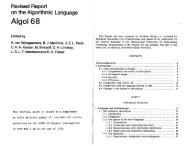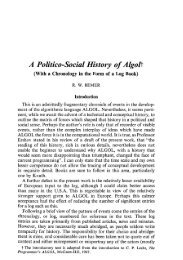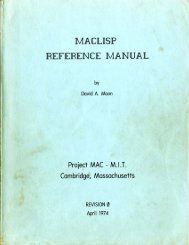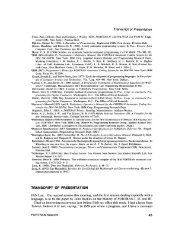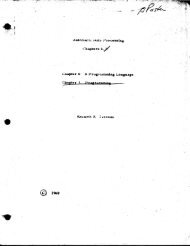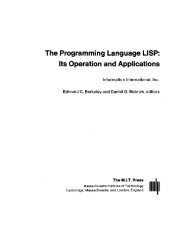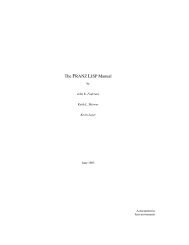LISP I Programmer's Manual - Software Preservation Group
LISP I Programmer's Manual - Software Preservation Group
LISP I Programmer's Manual - Software Preservation Group
Create successful ePaper yourself
Turn your PDF publications into a flip-book with our unique Google optimized e-Paper software.
TEN-ModeThere are ten buffers of core storage for S-expressionsset aside for use by the TEN-Mode of operation. Pieces of anS-expression can be typed into these buffers in any sequence,with overwriting allowed, and the Flexo-APPLY operator can beasked to operate on any set of consecutive buffers, e.g. 0through 6, or 4 through 9.To use the TEN-Mode, one may respond to a "fresh" GO (seepreceding footnote) by typing in+ TEN>Then type in a number from 0 to 9 representing one of the tenbuffers, and then a tab, and then a (piece of a) S-expressionand then a carriage return, as inThe Flexowriter will then type out a colon, :, and one can typeinto another buffer register in the same way as above by typinga buffer-register number, a tab, the information, and finally acarriage re turn.When an entire triplet has been typed in, the APPLY operatorcan be called for by typing, in response to the colon type-out,the read-line direction,- RLN 3Then two numbers followed by a carriage return must be typed in,n1 n2 , e.g. 01 , or 69 , or 99 . All the buffer registers,nl to n2 inclusive, are then turned over to the read program,which reads them in, printing out the number of each register asit is read. When a complete triplet f;x;p has been found by theread program, the APPLY operator operates on the triplet, printsout the answer, and then returns control to the read program,




